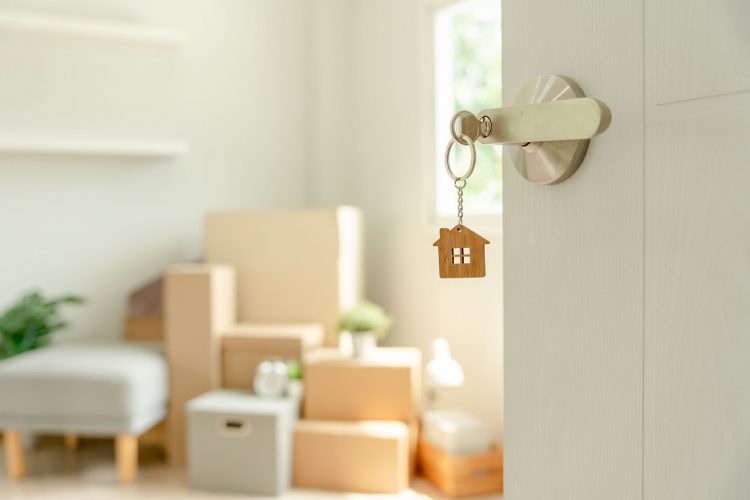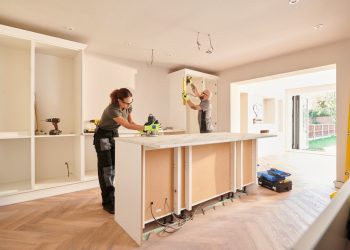Historically, women have made less money than men. Specifically, their median weekly earnings are only 83% of men’s, as reported by the U.S. Bureau of Labor Statistics. While this is true, women do dominate men in one category: homeownership.
Single women have, for the past few years, owned more homes than single men, according to a recent LendingTree report. To be specific, single women currently own 2.71 million more homes than single men.
The LendingTree report took a look at the latest U.S. Census Bureau data to determine the breadth of the gender gap in homeownership. The company’s analysis found that single women who live by themselves are more likely than single men who live by themselves to own a home in 47 out of 50 states.
“Surprising as it might initially seem, the data is clear—women who live by themselves are more likely to be homeowners than men who do the same in almost all of the nation’s 50 states,” said Jacob Channel, LendingTree’s senior economist and report author. “While some may attribute the higher homeownership rate among single women solely to things like divorce, it is important to keep in mind that the reasons why women are more likely to own homes than men are various and complex. Moreover, women’s higher homeownership rates do not discount other, oftentimes disproportionate, economic struggles that women face.”
On average, the report found that single women own 10.95 million homes (12.93% of homes nationwide), while single men own 8.24 million homes (10.22% of homes nationwide).
This data backs up the experience of Better Homes and Gardens Real Estate President Ginger Wilcox, who notes that throughout her career, she’s found that women tend to be the decision-makers when it comes to homeownership.
“What’s significant about this report is it highlights the trend of women continuing to grow their financial independence and using homeownership as part of their investment strategy. It’s a shift in societal norms and showcases investment savviness,” she explains.
Cindy Ariosa, vice president of Strategic Development for Howard Hanna Real Estate Services, agrees with Wilcox’s sentiment. In her experience, both as a REALTOR® and a mother, women are frequently the first to homeownership due to more empowerment in the current homeowning/-buying generations.
“It’s the difference between growing up. I think this generation, my daughter’s generation, was told that they can do it. They’ve been empowered,” says Ariosa. “My mother was like ‘go get married and have somebody take care of you.’ Meanwhile, my messaging to my daughter was that she could do anything her brother could do.”
Drilling down further, Ariosa notes that women are faster to independence than men, which contributes to their quicker take to homeownership. In her words, “women view homeownership more as an opportunity, while many men do not share that perspective.”
“I think the women feel confident. They’re proud of what they’ve been able to achieve and accomplish,” she says. “Where again, the guys are like, ‘eh, I don’t know if I want to do this right now. What happens if I want to move to the country? What happens if I want to move here? How many times do you want to move?’ It’s just a different outlook.”
While Kymber Lovett-Menkiti—co-owner and president of Keller Williams Capital Properties—agrees that women are more prone to homeownership, she views the higher rate as a byproduct of a narrowing gap in women’s and men’s salaries.
“As more women are earning salaries comparable to men for comparable work, it’s allowing for more access to homeownership on a single income,” she says. “We’ve found hosting homebuyer education seminars (both in-person and virtually) as a way to address some of the myths of homeownership and provide access to local resources to support homeowners that often gives more confidence to a single homebuyer to start the process.”
The report also found that the homeownership gender gap has increased slightly since 2021, when single women owned 10.76 million homes and men owned 8.12 million—a difference of 2.64 million.
Ariosa feels that the pandemic is the largest contributor to this change. She explains that when the employment market expanded to feature infinitely more remote work, many saw the opportunity to move to cheaper housing markets without having to find a new job and risk a pay cut.
“I think that really enhanced the opportunities for women, and men probably, too. But I think women weren’t afraid of the commitment,” she says.
Lovett-Menkiti acknowledges that the pandemic was a big driver of this change, expressing that there’s been a larger drive for community that may have prompted more women to move.
“Owning a home allows you to be part of a physical community, can fix your housing costs, and will be a driver in building your long-term wealth,” she adds.
Looking at the states individually, Delaware has the highest share of homes owned by single women, and the largest gap between women and men’s homeownership. Households in the state owned by single women come in at 15.34%—5.89 percentage points higher than the share of homes owned by single men.
After Delaware, Louisiana and Mississippi have the highest single-women homeownership rates—with 15.19% and 14.84% of households, respectively, owned by women. On the other end of the spectrum, single men’s homeownership rate is highest in New Mexico, North Dakota and Alaska, coming in at 12.85%, 12.74% and 12.44%, respectively.
While women largely dominate men in homeownership, there are some states where men win out. Alaska, North Dakota and South Dakota are the only states where single men own a higher share of homes than single women. In Alaska, the share of homes owned and occupied by men is 2.16 percentage points higher than the share owned by women. In North Dakota and South Dakota, the differences are 2.08 percentage points and 0.68 percentage points, respectively.
For prospective homebuyers, women and men alike, Ariosa’s No. 1 piece of advice is to save your money for a down payment.
“In order to build wealth, you’ve got to pay yourself first,” she says. “I think it’s very exciting to get a new job and go out and buy new clothes, new shoes and a new car. But, you don’t need the fanciest car, and you don’t need that many pairs of shoes. You want to save for yourself and for your family and for your future, and the best way to do that is homeownership.”
Lovett-Menkiti’s advice is to have a strong team behind you, meaning a good REALTOR® and mortgage lender you can rely on.
“Feel comfortable asking questions at each of the phases, and know that everything is negotiable, so don’t be afraid to ask for what you want throughout the process,” she says. “Real estate ownership is the No. 1 driver of wealth, so jump in.”
For the full LendingTree report, click here.












